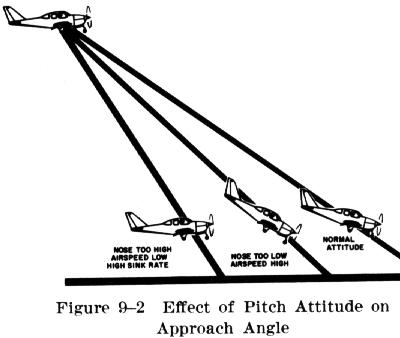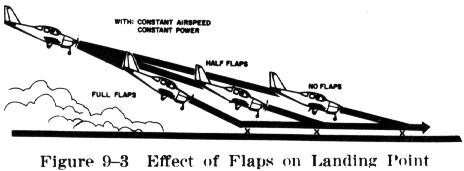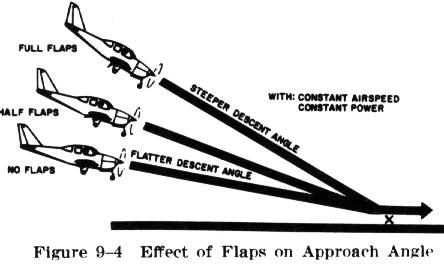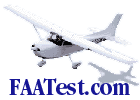| Final Approach
Immediately after the base to final approach turn is completed, the longitudinal axis of the airplane should be aligned with the centerline of the runway or landing surface, so that drift (if any) will be recognized immediately. On a normal approach, with no wind drift, the longitudinal axis should be kept aligned with the runway centerline throughout the approach and landing. (The proper way to correct for a crosswind will be explained under the section "Crosswind Approach and Landing." For now, only an approach and landing where the wind is light or straight down the runway will be discussed.) After aligning the airplane with the runway centerline, the final flap setting should be completed and the pitch attitude adjusted as required for the desired rate of descent. Slight adjustments in pitch and power may be necessary to maintain the descent attitude and the desired approach airspeed. In the absence of the manufacturer's recommended airspeed, a speed equal to 1.3 Vs0 should be used; that is, if Vs0 is 60 knots, the speed should be 78 knots. When the pitch attitude and airspeed have been stabilized, the airplane should be retrimmed to relieve the pressures being held on the controls. The descent angle should be controlled throughout the approach
so that the airplane will land in the center of the first third of the runway.
The descent angle is affected by all four fundamental forces that act on an
airplane (lift, drag, and thrust, and weight). If all those forces are constant,
the descent angle will be constant in a no wind condition. The pilot can control
those forces by adjusting: (1) the airspeed, (2) the attitude, (3) the power,
and (4) the drag (flaps or forward slip). The wind also plays a prominent part
in the gliding distance over the ground; naturally, the pilot has no control
over the wind but may correct for its effect on the airplane's descent by
appropriate pitch and power adjustments.
The objective of a good final approach is to descend at an angle and airspeed
that will permit the airplane to reach the desired touchdown point at an
airspeed which will result in a minimum of floating just before touchdown. To
accomplish this it is essential that both the descent angle and the airspeed be
accurately controlled. Since on a normal approach the power setting is not fixed
as in a power off approach, the power should be adjusted as necessary to control
the airspeed, and the pitch attitude adjusted SIMULTANEOUSLY to control the
descent angle or to attain the desired altitudes along the approach path. By
lowering the nose and reducing power to keep approach airspeed constant, a
descent at a higher rate can be made to correct for being too high in the
approach. This is one reason for performing approaches with partial power; if
the approach is too high, merely lower the nose and reduce the power. When the
approach is too low, add power and raise the nose. On the other hand, if the
approach is extremely high or low, it is advisable to reject the landing and
execute a go-around. This procedure is explained later in this chapter.
It will be found that the roundout, touchdown, and landing roll are much easier to accomplish when they are preceded by a proper final approach with precise control of airspeed, attitude, power, and drag, resulting in a stabilized descent angle.
|



